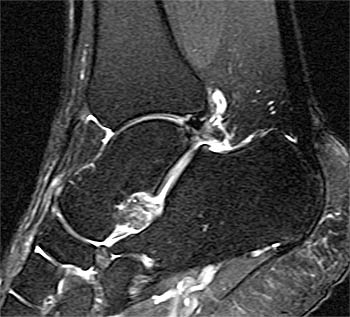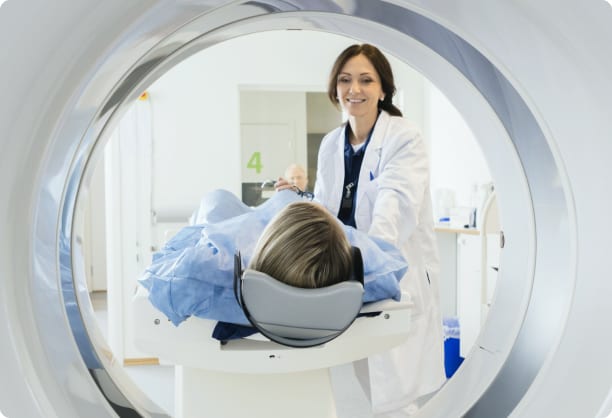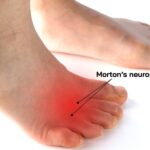Introduction
Welcome to our comprehensive guide on MRI scans, an invaluable diagnostic tool in foot and ankle healthcare. As a foot and ankle surgeon, I understand the importance of accurate diagnoses for effective treatment plans. In this blog post, we will explore what an MRI scan is, how it aids in diagnosing foot and ankle conditions, and what patients can expect during the procedure.
What is an MRI Scan?
MRI stands for Magnetic Resonance Imaging. It is a non-invasive imaging technique that uses a powerful magnetic field and radio waves to create detailed images of the inside of the body. Unlike X-rays or CT scans, MRI scans do not use ionizing radiation, making them a safe option for patients.
How Does an MRI Scan Help Diagnose Foot and Ankle Conditions?

MRI scans are particularly useful in evaluating soft tissues, such as ligaments, tendons, muscles, and cartilage, which are prevalent in foot and ankle conditions. These scans provide high-resolution images, allowing foot and ankle surgeons to identify and assess various conditions, including:
- Ligament and Tendon Injuries: MRI scans can detect ligament tears, tendon ruptures, and other injuries that may occur due to trauma or repetitive stress.
- Stress Fractures: MRI scans can reveal stress fractures, which are tiny cracks in the bones caused by overuse or repetitive stress.
- Arthritis: MRI scans can help assess the severity and extent of joint damage caused by arthritis, aiding in treatment planning.
- Tumors and Masses: MRI scans can detect the presence of tumors or abnormal growths in the foot and ankle region, assisting in early diagnosis and appropriate treatment.
What to Expect During an MRI Scan
Before the scan:
- You may be asked to remove any metallic objects, such as jewelry or clothing with metal zippers.
- Inform the radiology technologist about any metal implants or devices in your body, as they may interfere with the scan.
During the scan:
- You will lie on a padded table that slides into the MRI machine, which is a large cylindrical-shaped scanner.
- The technician will ensure you are comfortable and provide earplugs or headphones to minimize noise from the machine.
- It is important to remain still during the scan to ensure clear and accurate images.
- The machine may produce loud knocking or buzzing sounds, but rest assured, it is a normal part of the process.
After the scan:
- Once the scan is complete, you can resume your normal activities immediately. No recovery time is necessary.
Benefits of MRI Scans in Foot and Ankle Care
MRI scans offer several advantages in foot and ankle healthcare:
- Accurate Diagnosis: MRI scans provide detailed images, allowing foot and ankle surgeons to accurately diagnose conditions and develop tailored treatment plans.
- Non-Invasive: MRI scans are non-invasive and do not involve exposure to ionizing radiation, making them a safe imaging option for patients.
- Comprehensive Evaluation: MRI scans assess soft tissues, bones, and joints simultaneously, providing a comprehensive evaluation of foot and ankle conditions.
- Treatment Planning: Precise imaging from MRI scans helps foot and ankle surgeons develop effective treatment strategies and monitor the progress of interventions.
Conclusion
MRI scans are a valuable tool in foot and ankle healthcare, enabling foot and ankle surgeons to diagnose conditions with precision and accuracy. With their non-invasive nature and ability to provide detailed images of soft tissues, MRI scans play a crucial role in developing personalized treatment plans for patients. If you have any concerns or questions about your foot and ankle health, I encourage you to schedule a consultation with a foot and ankle surgeon who can guide you through the diagnostic process and recommend appropriate treatment options.
Remember, early diagnosis and proper treatment are key to restoring your foot and ankle health and getting you back on your feet pain-free.
If you believe you require an MRI scan to further assess your condition then Mr Mike Barrett is available to review your case and guide you further. Further information to book an appointment for a comprehensive personalised assessment.
Note: This blog post is for informational purposes only and should not replace professional medical advice. Consult with a foot and ankle surgeon for an accurate diagnosis and personalized treatment plan.
Last modified: October 24, 2023







